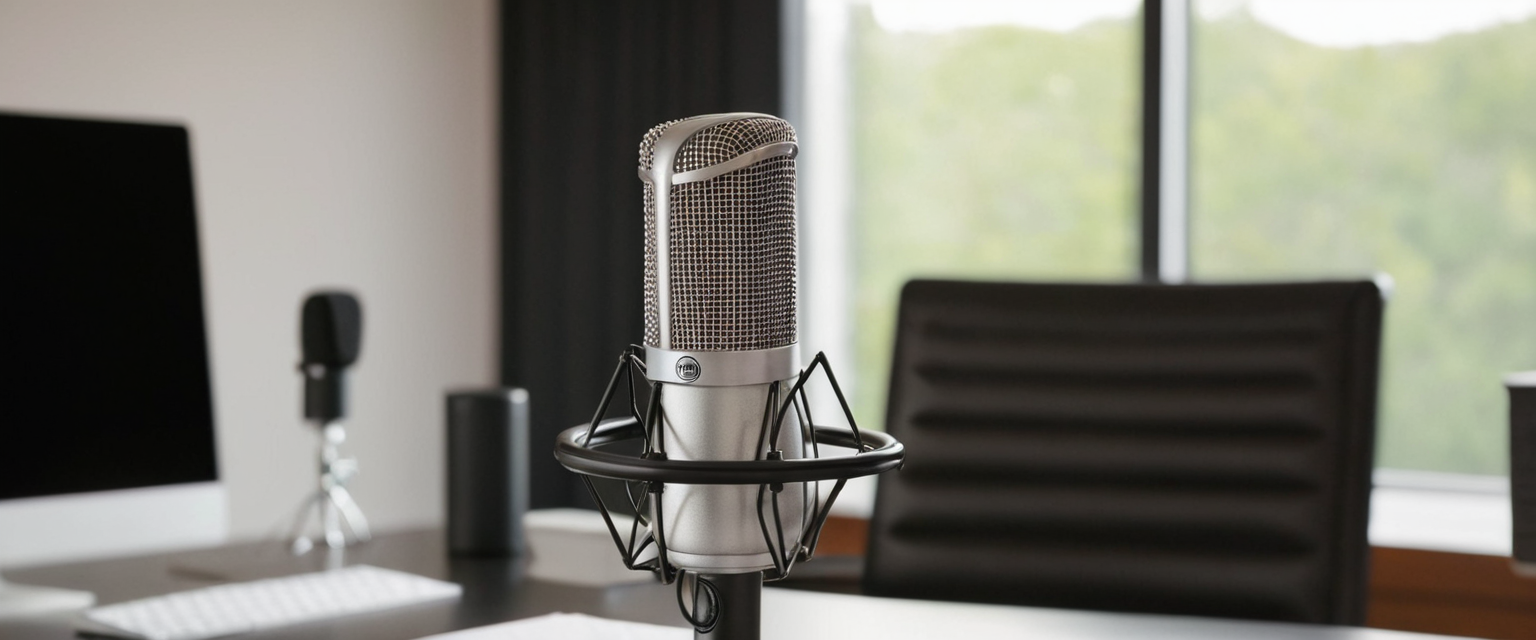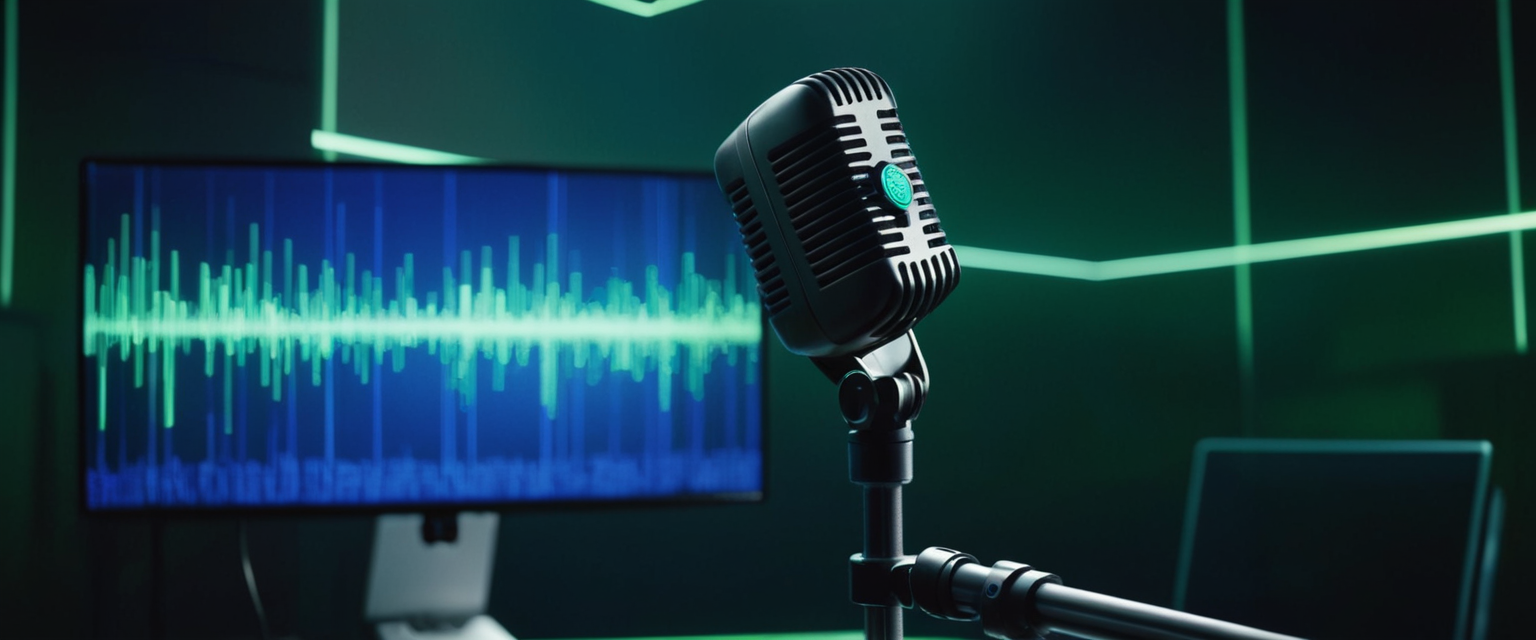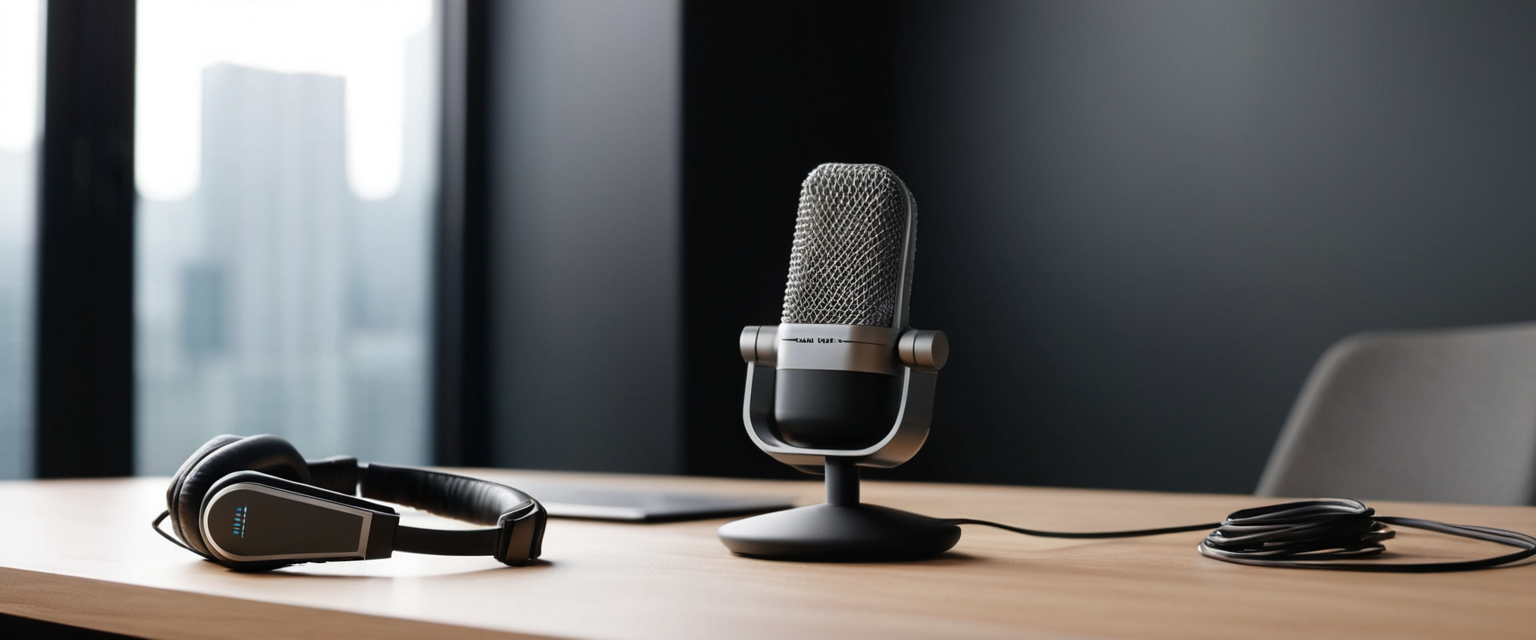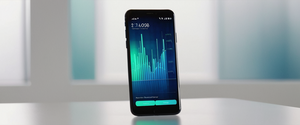
The intersection of personal hygiene, technical maintenance, and cybersecurity has become increasingly critical for podcasters and content creators in the modern digital landscape. This comprehensive analysis reveals that microphone hygiene for podcast creators encompasses far more than simple surface cleaning—it represents a multifaceted approach to protecting both the health of participants and the security of sensitive audio content. The research demonstrates that effective microphone hygiene practices must integrate physical sanitization protocols, equipment maintenance standards, privacy safeguards against unauthorized recording, and comprehensive security measures to prevent data breaches and surveillance threats. By examining established industry guidelines, emerging security vulnerabilities, and best practices from leading audio equipment manufacturers, this report provides an exhaustive framework for podcasters seeking to maintain safe, secure, and professionally sound recording environments while protecting themselves and their guests from both biological contamination and digital threats.
The Critical Importance of Microphone Hygiene in Podcasting
The microphone represents one of the most frequently shared and physically intimate pieces of audio equipment in any recording environment, making it arguably the highest-risk item for cross-contamination and disease transmission. Unlike most other podcast equipment that remains relatively stationary during recording sessions, microphones come into direct contact with performers’ mouths, hands, and breath on a regular basis, creating a unique vector for transmitting pathogens and accumulating biological material. The physics of microphone usage makes this contamination particularly significant—when individuals speak, sing, or perform directly into a microphone, they inevitably expel saliva droplets, moisture from respiration, and particulate matter that accumulates within the microphone’s grille and on its windscreen. This is not merely a theoretical concern; research from professional audio manufacturers has identified that during close-miking situations, particularly common in podcast recording where microphones are positioned just inches from the speaker’s mouth, the likelihood of significant droplet accumulation increases substantially.
The significance of microphone hygiene extends beyond contemporary pandemic-related concerns to encompass long-standing professional standards in broadcasting, music production, and live audio engineering. Before the widespread adoption of portable recording technology and remote podcasting, professional broadcast studios maintained strict protocols for microphone sanitation between different on-air talent, recognizing that shared microphones could transmit everything from common cold viruses to influenza and other communicable diseases. The rise of podcasting, particularly independent and remote podcasting, has somewhat reduced institutional oversight of these practices, yet the underlying risks remain unchanged. In fact, the informal nature of many podcast recording environments and the tendency for creators to prioritize content production over equipment hygiene has potentially increased the prevalence of unsanitary recording conditions in this sector.
The relationship between equipment cleanliness and professional sound quality further reinforces the importance of regular microphone maintenance practices. Accumulated saliva, lipstick residue, dust particles, and other foreign materials deposited on a microphone’s grille and internal components directly impact the capsule’s ability to capture clear, accurate audio signals. A microphone that has not been properly cleaned may produce muffled, distorted, or otherwise degraded audio output, necessitating extensive post-production work to salvage the recording. For podcasters operating on limited budgets with minimal editing resources, this degradation can render episodes unusable or significantly compromised in quality. Therefore, regular microphone hygiene serves the dual purpose of protecting human health while simultaneously maintaining the technical performance standards that listeners expect from professionally produced audio content.
Physical Cleaning and Sanitization Methods for Audio Equipment
The complexity of microphone construction and the sensitivity of internal electronic components necessitate a highly specific and careful approach to cleaning and sanitization that differs substantially from the methods used for general household cleaning. According to guidance provided by professional audio equipment manufacturers including Apogee Electronics, the fundamental principle underlying proper microphone cleaning is the avoidance of any approach that might damage the delicate electronics, precision-machined components, or specialized coatings applied to microphone housings. The most critical initial step in any microphone cleaning procedure involves completely disconnecting all cables and power sources from the device and allowing it to reach room temperature if it has been recently in use. This precaution prevents potential electrical damage, protects sensitive internal circuits from moisture exposure, and ensures the safety of the person performing the cleaning.
The choice of cleaning agent represents perhaps the most important decision in the microphone sanitization process, as incorrect chemical selection can cause permanent damage to microphone components and coatings. The industry standard recommendation from manufacturers calls for the use of a 70 percent isopropyl alcohol solution, with careful attention to ensuring the solution concentration falls within this specific range. Solutions with higher alcohol concentrations, typically above 75 percent, can damage certain types of paint, foam materials, and internal components, while solutions below 70 percent alcohol concentration may lack sufficient antimicrobial efficacy to effectively eliminate pathogens and reduce contamination risk. This narrow optimal range reflects the careful balance manufacturers must achieve between safety and efficacy when issuing cleaning guidance for their products.
The application method for cleaning agents is equally critical and surprisingly detailed in professional guidelines. Contrary to intuitive approaches that might involve spraying or misting cleaning solutions directly onto microphone equipment, audio equipment manufacturers strongly advise against any spray application method, including pressurized air or aerosol-based disinfectants. Instead, the proper technique involves applying a small amount of the 70 percent isopropyl alcohol solution to a lint-free microfiber cloth—with emphasis on avoiding microfiber materials that can leave residue—and then applying this damp cloth in gentle, deliberate strokes across the external surfaces of the microphone. The key principle underlying this method is that moisture should never be sprayed directly onto microphone equipment, as the resulting liquid can seep into sensitive internal components, corrode electrical connections, damage electronic circuitry, or cause malfunctions in the microphone’s capsule.
For removable microphone grilles and windscreens, which represent the primary accumulation points for biological material and contaminants, manufacturers recommend a more thorough but still cautious cleaning procedure. The appropriate methodology involves carefully unscrewing or gently separating the grille from the microphone body, exercising care not to damage the internal capsule structure. Once removed, the grille can be cleaned using a solution of lukewarm water combined with mild detergent, typically a standard dish-washing liquid, which effectively breaks down saliva residue, lipstick, and other organic materials. A soft-bristled toothbrush can be employed for more stubborn accumulation, with gentle circular motions applied to corner areas and crevices where material tends to collect. The cleaned grille should then be allowed to dry completely before reattachment, as any residual moisture trapped between the grille and the capsule can cause performance degradation or component damage.
The process of air drying microphone components after cleaning deserves specific attention, as improper drying procedures can negate the benefits of thorough cleaning. Rather than using compressed air, heat sources, or mechanical drying methods, the appropriate approach involves simply allowing the microphone and its components to sit uncovered in ambient room conditions to air dry naturally. This process may require anywhere from several hours to overnight, depending on environmental humidity levels and the amount of moisture involved. The seemingly simple act of waiting for natural drying actually reflects a sophisticated understanding of the delicate nature of microphone electronics—forced drying methods introduce risks of thermal shock to components, can drive moisture deeper into enclosures, or may create static electrical charges that damage sensitive circuitry.
Beyond the standard isopropyl alcohol and mild detergent approach, professional audio equipment companies including Focusrite recommend utilizing disinfecting wipes approved by health authorities such as the CDC or World Health Organization as an alternative or supplementary cleaning method. These disinfecting wipes provide a measured dose of antimicrobial agent and allow for quick, targeted application to microphone surfaces without the risk of over-saturation that might occur with spray application. However, similar principles apply—users must exercise caution to ensure that liquid from disinfecting wipes does not seep into ventilation ports, microphone connectors, or internal components. When using any wet-based cleaning method on audio equipment, the peripheral devices connected to the microphone system, including headphones, cables, and audio interfaces, should also receive attention.
Understanding the Health and Performance Risks of Unclean Microphones
The accumulation of biological material on shared microphones represents a genuine public health concern that becomes particularly acute in environments where multiple speakers or singers use the same equipment across multiple recording sessions. Research examining the transmission of communicable diseases through shared audio equipment has demonstrated that saliva and respiratory droplets deposited on microphone windscreens and grilles create an environment where viruses and bacteria can persist for extended periods. The specific risk profile depends on the particular pathogen involved—cold and influenza viruses, for example, can remain viable on surfaces for hours or even days depending on environmental conditions and the specific viral strain. For individuals operating in group recording situations, live performance settings, or shared recording spaces, the probability of disease transmission through shared microphone use increases substantially if proper hygiene protocols are not maintained.
The mechanics of disease transmission through microphone contact operate through multiple pathways that collectively increase the overall risk profile. The most direct pathway involves oral contact, where the next speaker to use a contaminated microphone may directly contact residual saliva or respiratory material on the windscreen or grille. A second transmission pathway involves hand contact, where individuals handling microphones may inadvertently transfer contaminated material from the microphone to their face, eyes, or mouth during the course of a recording session. A third pathway involves aerosol transmission of particles suspended in air immediately after an infected individual uses a microphone—the forceful exhalation associated with speech or singing can create aerosol conditions that persist in the immediate vicinity of the microphone. Each of these transmission pathways represents a potential vector for disease spread, making microphone hygiene practices essential not merely as a courtesy or professional standard, but as a fundamental public health measure.
The performance degradation associated with accumulated contamination on microphones represents a parallel but distinct concern that affects the quality of podcast audio output. Saliva, lipstick, food particles, and environmental dust accumulating on microphone grilles create a physical barrier that interferes with the microphone capsule’s ability to accurately capture acoustic signals. This interference manifests as muffled, attenuated, or otherwise distorted audio output, with the specific characteristics depending on the size, composition, and distribution of accumulated material. For dynamic microphones, which rely on precise mechanical movement of a diaphragm within the capsule, accumulated contaminants can create resistance to this movement, resulting in reduced sensitivity and frequency response degradation. Podcast creators who fail to maintain regular cleaning schedules may discover that their equipment produces increasingly compromised audio quality over time, eventually reaching a point where professional post-production cannot adequately salvage recordings.
The psychological and organizational impacts of establishing regular microphone cleaning protocols should not be overlooked in discussions of optimal podcasting practices. When podcast teams implement systematic cleaning schedules—such as cleaning microphones once monthly or after every other session—this establishes a professional standard that signals to all participants that health and quality standards matter within the organization. Conversely, the absence of visible cleaning protocols and poor equipment hygiene can undermine listener trust in the professionalism of a podcast and may suggest organizational negligence or low production values. This psychological component of microphone hygiene, while perhaps subtle, contributes to the overall professional brand and listener perception of podcast quality.

Security and Privacy Threats to Podcasting Equipment
The security threats associated with microphones and webcams in podcasting environments extend far beyond traditional hygiene concerns to encompass sophisticated cybersecurity vulnerabilities and surveillance risks. Modern microphones, particularly those integrated into computers, webcams, or connected audio interfaces, represent potential entry points for malware and unauthorized audio capture, allowing attackers to record sensitive conversations without the knowledge or consent of participants. The widespread adoption of remote podcasting technologies has exponentially increased the complexity of the security landscape, as podcast creators now depend on network connections, cloud-based recording platforms, and third-party software that may contain vulnerabilities unknown to users.
Protect Your Digital Life with Activate Security
Get 14 powerful security tools in one comprehensive suite. VPN, antivirus, password manager, dark web monitoring, and more.
Get Protected NowRecent security research has identified critical vulnerabilities in Bluetooth-enabled audio devices including headphones, wireless microphones, and Bluetooth speakers from major manufacturers. Researchers from ERNW (Enno Rey Netzwerke GmbH) discovered three significant vulnerabilities affecting 29 Bluetooth devices from reputable brands including Sony, Bose, JBL, Beyerdynamic, Marshall, and others that incorporate Airoha Systems on a Chip technology. These vulnerabilities could allow attackers positioned within Bluetooth range (approximately 10 meters or 33 feet under ideal conditions) to intercept audio signals, eavesdrop on conversations, initiate unauthorized calls, access contact lists, or retrieve call history from paired devices. The attack methodology involves identifying vulnerable devices through their Bluetooth MAC address fingerprints, extracting Bluetooth link keys stored in the device’s memory, and then impersonating the legitimate device to intercept communications. While the attack requires technical sophistication and physical proximity, the implications for privacy-conscious podcasters are significant—anyone using vulnerable Bluetooth microphones or recording in public spaces where attackers could position themselves nearby faces potential surveillance risks.
The vulnerabilities in video conferencing platforms used for remote podcasting interviews present another critical security consideration. Research disclosed by Jamf Principal Security Researcher Patrick Wardle identified zero-day vulnerabilities in the Zoom macOS client that could allow attackers with physical access to a computer to escalate their privileges to complete system control or inject malicious code that provides persistent access to the user’s webcam and microphone. These vulnerabilities exploited deprecated and insecure APIs, allowing attackers to potentially gain root-level access to compromised systems. While the specific vulnerabilities required physical device access, they represent the class of attacks that could theoretically be executed by malicious actors in shared recording spaces or through compromised devices used in remote recording sessions.
AI-powered voice cloning technologies represent an emerging and sophisticated threat to podcast creators and their audiences. Recent research from McAfee discovered that cybercriminals can create convincing voice clones using as little as three seconds of audio sample, enabling deepfake attacks where scammers impersonate podcast hosts, guests, or other trusted figures. The attack methodology typically involves harvesting voice samples from public sources such as podcast episodes, YouTube videos, or social media content, then using commercially available or open-source AI tools to generate synthetic voice recordings that sound indistinguishable from the original speaker. Victims of such attacks have reported losing money when deceived by voice clones claiming to be family members in distress or trusted authorities requesting urgent action. For podcast creators whose voices are widely distributed and easily accessible online, the risks from voice cloning attacks present genuine threats to personal security and could enable harmful impersonation attacks.
The proliferation of audio capture malware and advanced persistent threat tools underscores the systematic nature of surveillance concerns. According to MITRE ATT&CK framework analysis, audio capture represents a well-established technique employed by advanced threat actors including nation-state and sophisticated criminal organizations. Malware tools such as APT37’s SOUNDWAVE utility, the advanced Flame toolkit, and commercial remote access trojans like Revenge RAT all include audio capture capabilities that allow attackers to record microphone input for extended periods. The dangerous characteristic of audio capture attacks is that they exploit fundamental operating system features and microphone permissions, making them extraordinarily difficult to detect or mitigate without completely disabling microphone functionality. Once malware achieves system access, an attacker can record extensive audio from compromised microphones, capturing everything from casual office conversations to confidential business discussions or sensitive personal information shared during podcast interviews.
The risks of unauthorized microphone access through malicious USB devices and supply chain compromises represent additional attack vectors that podcast creators should understand. Research on USB-based attacks demonstrates that specialized devices resembling ordinary USB storage drives can be loaded with malware that activates immediately upon insertion into a computer. If a podcast creator unknowingly inserts a compromised USB device to backup recordings, edit audio files, or perform other routine tasks, the malware can establish persistent remote access, capture microphone and webcam feeds, harvest stored passwords, and establish reverse shells providing complete system control. This particular threat model is particularly relevant for creators attending conferences, events, or using shared computing facilities where USB devices may be circulated or left unattended.
Best Practices for Equipment Maintenance and Protection
Implementing a comprehensive microphone hygiene and maintenance protocol requires establishing specific, measurable procedures that can be consistently executed across all recording sessions and audio equipment. The foundation of such a protocol involves establishing a regular cleaning schedule that balances hygiene requirements with practical operational constraints. Many professional audio engineers recommend cleaning microphones at minimum once monthly, though for shared microphones used across multiple speakers or in group recording situations, weekly or even per-session cleaning may be appropriate. The specific frequency should be determined based on usage patterns—high-volume recording sessions with multiple speakers necessitate more frequent cleaning, while solo podcasters might maintain adequate hygiene with less frequent protocols.
Establishing documented procedures for microphone cleaning helps ensure consistency and provides training resources for team members. These procedures should specify the exact cleaning agents to be used (70 percent isopropyl alcohol and mild detergent solutions approved by equipment manufacturers), the application methods (lint-free cloths, gentle wiping motions, avoidance of spray application), the timeline for drying (natural air drying with no forced methods), and the frequency of cleaning based on usage patterns. Documentation should include manufacturer-specific guidance for particular microphone models, as different equipment may have different material compositions and sensitivities. Many manufacturers provide detailed cleaning guides that should be referenced when establishing internal procedures.
Pop filters and windscreens represent preventative measures that can substantially reduce the accumulation of contaminants on microphone capsules and grilles. Pop filters are thin, circular mesh barriers positioned between the speaker and the microphone that serve dual purposes—they reduce plosive sounds (the explosive consonant sounds like “p” and “t” that create unwanted distortion) while simultaneously creating a physical barrier that prevents saliva and moisture from directly contacting the microphone. Windscreens, typically made of dense polyurethane foam, provide similar protection and have the added benefit of reducing wind noise in outdoor recording environments. By implementing these preventative barriers, podcast creators can substantially reduce the rate of contamination accumulation on microphones, extending the interval between deep cleaning sessions while maintaining hygiene standards.
Some recording professionals have adopted the practice of using disposable plastic bags or specialized microphone covers during recording sessions, particularly when health concerns are elevated or when multiple speakers will use the same equipment. These covers are replaced between speakers or recording sessions and then discarded, creating a physical barrier that prevents direct saliva contact with the microphone windscreen. However, manufacturers caution that this approach has significant tradeoffs—plastic barriers can degrade audio quality by creating acoustic reflections and dampening, may create safety hazards through risky droplet dispersal when removed, and requires strict adherence to hygiene protocols when replacing bags. If podcast creators choose to implement this protective measure, they should follow manufacturers’ guidance precisely, including wearing appropriate personal protective equipment (masks, gloves, eye protection) when handling potentially contaminated materials.
For podcast teams and recording facilities, establishing specialized equipment storage and sanitization stations demonstrates organizational commitment to health and security standards. These stations should include appropriate cleaning supplies (70 percent isopropyl alcohol, lint-free cloths, mild detergents, microfiber towels), replacement windscreens and pop filters, manufacturer-specific cleaning guides for all equipment models, and designated storage areas where cleaned equipment can air-dry safely. Assigning specific team members responsibility for equipment maintenance and establishing accountability procedures helps ensure that cleaning protocols are consistently followed rather than occasionally neglected. Documentation of cleaning activities, including dates, time spent, and any equipment issues identified during cleaning, creates both an audit trail and a maintenance history that can identify patterns of degradation or recurring problems requiring equipment replacement.
Emerging Technologies and Privacy Concerns
The integration of artificial intelligence, cloud computing, and advanced analytics into podcast production workflows has introduced new categories of privacy and security risks that extend beyond traditional microphone hygiene. Cloud-based remote recording platforms, while offering tremendous convenience for distributed teams and remote interviews, create potential vectors for unauthorized access to sensitive audio content. These platforms typically transmit audio data across the internet to remote servers for processing, creating periods of exposure where audio files are vulnerable to interception, unauthorized access through security breaches, or data harvesting by platform operators. Podcast creators utilizing cloud-based recording tools should carefully evaluate the encryption protocols these platforms employ, verifying that end-to-end encryption is implemented for data transmission and storage.
The emerging threat of deepfake audio and voice cloning technologies deserves particular attention from podcast creators, as these technologies create new vulnerabilities around guest privacy and authentication. While preventing deepfakes entirely may be technically challenging, podcast creators can implement specific countermeasures including establishing verbal authentication protocols for sensitive episodes, verifying guest identities through multiple channels before recording sensitive content, and implementing forensic watermarking techniques that embed unique identifiers in audio files to trace unauthorized copies. For high-stakes interviews involving sensitive topics or controversial figures, podcasters should consider implementing “safeword” protocols similar to those used in finance and national security contexts, where participants establish unique authentication phrases that must be verbally confirmed during interactions.
Encrypted transcription services and AI-powered audio processing tools present additional privacy considerations that podcast creators must navigate carefully. While AI transcription offers convenience and cost savings compared to human transcriptionists, research has identified substantial privacy and accuracy concerns with commercially available AI transcription services. A notable incident involving Otter.ai resulted in a federal class-action lawsuit alleging that the company recorded private conversations after formal meetings concluded and used those recordings to train its AI system without explicit user consent. This incident highlights the critical importance of carefully evaluating the data retention and usage policies of any transcription or audio processing service used by podcast producers. For sensitive content, human transcription remains the most secure and reliable option, despite higher costs.
The proliferation of Internet of Things (IoT) devices with embedded microphones presents systemic privacy risks for podcast recording environments. Smart speakers including Amazon Alexa and Google Assistant continuously monitor their surroundings for wake words, creating potential pathways for unauthorized audio recording. Research has identified that these devices can be falsely activated by common words that phonetically resemble wake words, potentially recording snippets of private conversations. Additionally, these devices often transmit audio samples to cloud servers for processing, creating periods where audio data is in transit and potentially vulnerable to interception. Podcast creators concerned about privacy should ensure that smart speakers and other IoT devices with microphones are either disabled during sensitive recording sessions, physically removed from recording spaces, or thoroughly reviewed for privacy configuration settings.
Forensic watermarking technologies, while primarily used in film and entertainment industries, offer potential applications for podcast creators seeking to protect high-value content from unauthorized distribution. Forensic watermarking embeds invisible identifiers into audio files that allow content owners to trace leaked recordings back to their original source, providing both deterrent effects and investigative capabilities when breaches do occur. While implementation of forensic watermarking requires specialized technical infrastructure and may represent an excessive investment for independent podcasters, larger podcasting organizations producing high-value content should evaluate whether watermarking provides adequate additional protection to justify its implementation costs.

Legal and Ethical Considerations for Podcasters
The legal framework governing podcast recording and guest participation establishes important requirements that interact with hygiene and privacy considerations. Podcast creators have explicit legal obligations to obtain informed consent from guests before recording, to clearly communicate how recordings will be used, to specify the scope of rights granted for edited and distributed content, and to provide guests with adequate information to make informed decisions about participation. Consent documentation should address not only the basic act of recording but also specific clarifications around privacy protections, potential for content editing, anticipated distribution channels, and the retention duration for recordings.
The podcast guest release form represents a legally significant document that, when properly executed, protects podcast creators from subsequent disputes regarding content ownership, usage rights, and liability. A comprehensive guest agreement should clearly specify that the podcast host retains exclusive copyright ownership of the final recorded episode, has unrestricted rights to edit and modify guest contributions, can distribute the content across multiple platforms including commercial distribution, and can continue distributing the content indefinitely. Additionally, the agreement should establish representations and warranties whereby guests confirm they have the legal right to participate in the interview and that their statements do not infringe upon the intellectual property rights of third parties. A well-drafted guest agreement, executed before recording begins, provides documentation that protects podcast creators in the event of subsequent disputes.
The Family Educational Rights and Privacy Act (FERPA) and comparable data protection regulations impose specific requirements on educational institutions and organizations handling student data when using podcast platforms or recording technologies. Institutions must ensure that third-party vendors and platforms used for educational podcasting comply with applicable privacy regulations, explicitly designate who maintains control over recorded data and education records, and implement audit procedures to verify ongoing compliance. The case study of a school system administrator reveals that despite formal privacy policies at the institutional level, ambiguity often persists regarding third-party data collection practices—particularly regarding what data technology companies are gathering about students and how that data is being used. Educational institutions using podcasting for instruction must actively implement privacy-by-practice approaches rather than relying solely on policy documents, including technical controls that minimize data collection by default.
The consideration of marginalized and vulnerable populations introduces additional ethical dimensions to podcast guest protection protocols. Research has identified that individuals from historically marginalized communities may experience participation in podcast recording differently than dominant-group members, particularly around surveillance and privacy concerns. Audio recordings can function as tools for re-traumatization or expose vulnerable individuals to increased risks if privacy protections are inadequate. Podcast creators have ethical obligations to exercise heightened sensitivity when recording guests from marginalized communities, to implement robust privacy protections that go beyond minimum legal requirements, and to allow guests to participate with maximum anonymity if requested.
Comprehensive Implementation Strategies for Safe Podcasting
Creating a holistic podcasting safety framework requires integrating physical hygiene protocols, digital security measures, privacy protections, and legal compliance procedures into a unified system. This implementation strategy should begin with environmental assessment, where podcast creators evaluate their recording spaces to identify potential security vulnerabilities, hygiene risks, and environmental factors that might compromise privacy. This assessment should address physical access controls, identifying who has access to recording spaces and under what conditions; digital infrastructure, determining what internet connectivity, cloud services, and recording software are used; equipment inventory, cataloging all microphones, webcams, audio interfaces, and peripheral devices; and external threats, considering factors such as proximity to public spaces, whether recording occurs in shared facilities, and whether other occupants might access recording equipment.
Access control represents a fundamental security measure that establishes explicit procedures regarding who can physically access recording equipment and recording spaces. These controls should involve locking storage areas for microphones and other sensitive equipment, implementing password protection for computers and recording software, restricting network access to authorized devices, and maintaining audit logs of who accessed equipment and when. For podcast teams, role-based access controls (RBAC) help ensure that team members have access only to the information and equipment necessary for their specific functions, reducing exposure of sensitive content to unnecessary people. Additionally, organizations should implement departure procedures ensuring that former employees or contractors immediately lose access to recording systems, equipment, and archived content.
Data encryption represents a critical technical control that protects podcast content from unauthorized access or interception. This encryption should operate at multiple levels—encrypting data while in transit across networks, encrypting data while stored on local and cloud servers, and employing end-to-end encryption for sensitive communications about content. Podcast creators should carefully evaluate the encryption capabilities of any cloud storage, recording platform, or file-sharing service used in their workflow, verifying that encryption meets industry standards (such as AES-256) and that encryption keys are managed securely. For particularly sensitive content, local recording and storage of podcast files before cloud backup provides an additional security layer that reduces exposure to cloud-based vulnerabilities.
Multi-factor authentication (MFA) for all accounts and systems controlling podcast content represents another fundamental technical control that dramatically reduces the likelihood of unauthorized account access. MFA requires users to provide multiple forms of verification (something they know like a password, something they have like a security token, or something they are like biometric data) before gaining access to systems. By implementing MFA across podcast hosting platforms, cloud storage services, email accounts, and recording software, podcast creators substantially increase the difficulty for attackers attempting to gain unauthorized access to content. Additionally, regular password updates and the use of unique, complex passwords managed through secure password managers helps prevent credential compromise.
Personnel training and awareness programs represent essential elements of any comprehensive security program, as the majority of successful attacks against organizations involve some element of social engineering or human exploitation rather than purely technical exploits. Podcast creators and team members should receive training on recognizing phishing emails and fraudulent communications, avoiding unsafe downloads or suspicious file attachments, securely handling sensitive content, and recognizing unauthorized access attempts. This training should address emerging threats including AI-powered phishing attacks and deepfake impersonation attempts. Regular security simulations and phishing drills help reinforce awareness and identify individuals who need additional training.
Monitoring and incident response planning establish procedures for detecting security violations or privacy breaches and responding quickly to minimize damage. Podcast creators should implement basic monitoring of their recording systems to identify unusual access patterns, unexpected system changes, or unauthorized data transmission. Establishing incident response procedures before a breach occurs—including clear roles and responsibilities, communication protocols, preservation procedures for forensic evidence, and notification procedures for affected individuals—helps organizations respond effectively when security incidents do occur. Regular backups of podcast content stored in multiple locations (both local and cloud-based) ensure that content remains recoverable even if the primary storage system is compromised.
Emerging Standards and Industry Best Practices
The podcast industry has begun developing more formalized security and privacy standards in response to increasing awareness of risks associated with content creation. These standards emerge from recognition that podcast platforms and hosting services function as critical infrastructure for content distribution, and that compromised platforms create risks not only for podcasters but also for listeners and guests. The concept of a unified consent framework for podcasting represents one emerging best practice, where podcast publishers, hosts, and distribution platforms establish standardized mechanisms for communicating user privacy preferences regarding data collection and tracking. Such a framework would allow listeners to specify their preferences once and have those preferences automatically communicated to all platforms and service providers in the podcasting ecosystem.
Enhanced security features specifically designed for private and corporate podcasting represent another emerging category of solutions. These platforms implement advanced authentication systems, directory integration with enterprise systems, session management controls, centralized administration with audit trails, and custom security policies tailored to organizational requirements. Organizations distributing sensitive content through podcast channels can implement company-controlled access systems that provide complete oversight of content distribution, user access, and interaction patterns. These enterprise solutions recognize that podcast content, when used for internal corporate communications or highly sensitive topics, requires security measures comparable to traditional confidential communications systems.
The implementation of digital rights management (DRM) and watermarking technologies within podcast platforms provides additional protection mechanisms that can deter unauthorized copying and distribution. While complete prevention of unauthorized sharing remains technologically impossible, making unauthorized distribution more difficult and increasing the consequences of such distribution through traceability improves the overall security posture. Podcast creators dealing with particularly valuable or sensitive content should evaluate whether watermarking technologies and DRM protections provide sufficient value to justify implementation costs and potential negative impacts on listener experience.
The Clean Mic Advantage for Safe Podcasting
Microphone hygiene and security for podcast creators encompasses a comprehensive ecosystem of practices spanning physical cleaning protocols, equipment maintenance, digital security measures, privacy protections, legal compliance, and institutional governance structures. The research and expert guidance examined in this analysis consistently demonstrates that effective podcast safety requires integration of all these components rather than reliance on any single measure. Physical microphone contamination poses genuine public health risks in shared recording environments, requiring regular cleaning using properly formulated solutions and careful application methods that protect sensitive internal components. Simultaneously, the digital threats to podcast recording environments—including malware, surveillance vulnerabilities, unauthorized network access, and deepfake exploitation—demand equally rigorous attention and systematic countermeasures.
Future development of podcasting infrastructure should prioritize establishing industry-wide standards for data security, privacy protection, and content authentication that provide clarity and consistency for podcast creators across platforms and services. The relative immaturity of podcasting security standards compared to other digital industries creates confusion regarding best practices and leaves creators vulnerable to preventable security lapses. Industry bodies and podcasting associations should work collaboratively with technical experts, legal professionals, and security researchers to develop comprehensive standards addressing authentication, encryption, access control, incident response, and regulatory compliance.
Technical innovation should focus on developing user-friendly security tools specifically tailored to podcast creators’ workflows, recognizing that podcast production often occurs within resource-constrained environments where complex security procedures may be impractical. Streamlined, automated security controls that require minimal ongoing management from podcast creators can achieve robust protection without imposing unrealistic burdens on production teams. Additionally, podcast platforms themselves should take primary responsibility for implementing baseline security protections that creators can rely upon rather than requiring individual podcasters to implement sophisticated security infrastructure.
Ultimately, safe podcasting requires recognizing that microphone hygiene, digital security, and privacy protection represent interconnected elements of a unified commitment to professionalism, respect for guests and audiences, and stewardship of sensitive information. Podcast creators who integrate these practices into their production workflows demonstrate respect for their guests’ health and privacy, maintain the technical quality standards that audiences expect, protect their own intellectual property and personal security, and contribute to building a more trustworthy and professional podcasting ecosystem. As podcasting continues expanding in scope, scale, and importance as a communication medium, the implementation of comprehensive safety practices becomes increasingly critical for the long-term sustainability and credibility of the medium.






